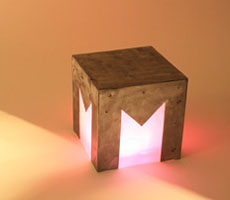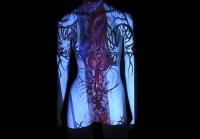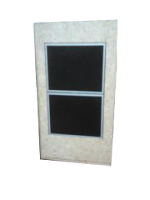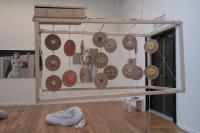Home · About · Blog · Books · Clothes · Collaboration · Collages · Commissioned work · Exhibitions · FMI · Graphic design · Humanitas · Illustration · Interactive · Internship · Light · Minerva · Movement · Objects · Old work · PatchingZone · Photography · Portraits · Research · Videos · Web design · Workshops

A lamp
A wooden lamp with human silhouettes in different colors
made in 2007
(work 1 of 6)

Minerva zichtbaar
A collaboration between Minerva and MER students,
it is a cube with a screen built into it,
showing short films by students and staff.
made in 2010
(work 2 of 6)

Minerva AMP project
The stripes are tires that serve as frames.
Within these frames orders or other things can be placed.
Because the tires are the frames that can be broken,
you can hang assignments behind the boxes.
The text can be pinned down with thumbtacks,
pins serve as the frame maker.
made in 2010
(work 3 of 6)
Inject your own aids
A recording of a Processing program
that shows an animated blood stream in a vein.
When you hover over the vein an injection needle
appears and when you click, a disease is injected
into the vein which will slowly start spreading,
eventually covering the complete vein.
In the background a heart beat can be heard,
the heart beat will increase as the disease
is spreading through the vein.
made in 2011
(work 4 of 6)
Interactive trash
In the trashcan are sensors that detect where the waste is thrown down.
So if you drop something left it wil show left, if you drop it right it wil fall right.
This allows you to play games like Four in a Row.
The color of newly dropped balls changes according to the hour of day so you can
see at which time someone dropped something into the trashcan.
Also very handy: if you connect to a network you can send a signal that
specifies that the bin is full.
made in 2011
(work 5 of 6)
Facial recognition within the autistic spectrum
My graduation exhibition at Minerva: interactive object.
People with autism percieve differently than people without autism.
If we look at a face we see the eyes first and then the mouth. People with autism look
first at the hairline, and then the ears, nose, eyes and the mouth. Given the amount of
information they receive the emotions are more difficult to recognize than when you
only focus on the eyes and mouth. With this project I want to show how people with
autism recognize faces.
made in 2012
(work 6 of 6)






